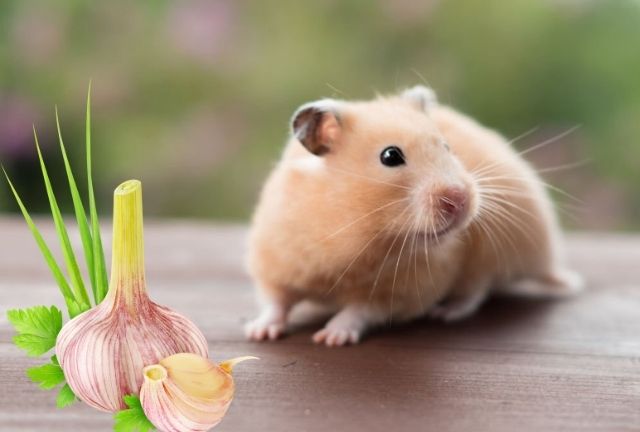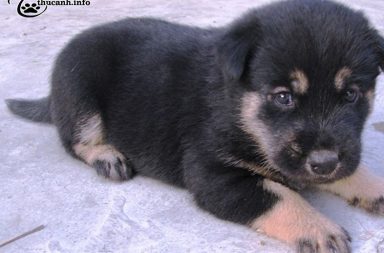Can Hamsters eat garlic? Hamsters are popular household pets and, as such, their owners provide them with a varied diet to keep them healthy. However, not all human foods are safe for hamsters to eat, and some can be toxic or harmful to their health. One common food that many people wonder about is garlic. In this article, we will explore whether hamsters can eat garlic, the potential risks and effects on their digestive system, and what to do if your hamster has eaten garlic.

Is it good or bad for hamsters to eat garlic?
1. Can Hamsters Eat Garlic?
Hamsters should not be fed garlic as it can be harmful to their health. Garlic contains compounds that can be toxic to hamsters, leading to digestive issues and potential damage to their red blood cells. It is best to avoid feeding garlic to hamsters and provide them with a balanced diet of hamster-specific food and appropriate fruits and vegetables. Always consult with a veterinarian for guidance on the proper diet and nutrition for your hamster.
2. Nutritional composition of garlic
Garlic is a bulbous plant belonging to the Allium family. While it contains various nutritional components, it is important to note that hamsters should not consume garlic due to its potential toxicity. However, for general information, garlic is known to contain vitamins such as vitamin C, vitamin B6, and minerals like manganese and selenium. It also contains small amounts of fiber, protein, and carbohydrates. Garlic is often recognized for its distinct flavor and aroma, which is attributed to sulfur-containing compounds like allicin. Although humans may enjoy the nutritional benefits of garlic, it is not suitable for hamsters and should be avoided in their diet.

Some dangers when rats eat garlic
3. Risks and Dangers of Feeding Garlic to Hamsters
Feeding garlic to hamsters can pose several risks and dangers to their health. Here are some potential risks associated with feeding garlic to hamsters:
- Toxicity: Garlic contains compounds such as thiosulphate, which can be toxic to hamsters. These compounds can lead to oxidative damage and destruction of red blood cells, causing anemia and other serious health issues.
- Digestive Problems: Garlic can irritate the sensitive digestive system of hamsters, leading to gastrointestinal distress, including diarrhea, stomach upset, and discomfort.
- Respiratory Issues: The strong odor of garlic can also cause respiratory irritation in hamsters, leading to breathing difficulties, coughing, and wheezing.
- Allergic Reactions: Some hamsters may be allergic to garlic, and consuming it can trigger allergic reactions such as itching, swelling, and respiratory distress.
- Negative Impact on Liver and Kidneys: Garlic contains certain compounds that can put a strain on the liver and kidneys of hamsters, potentially leading to organ damage and impaired function.
4. Alternatives to Garlic for Hamsters
When it comes to feeding hamsters, it is best to avoid garlic altogether due to its potential risks and toxicity. However, there are plenty of other safe and healthy alternatives you can include in your hamster’s diet. Here are some alternatives to garlic for hamsters:
- Herbs: Safe herbs such as parsley, cilantro, basil, and mint can be added to your hamster’s diet in small quantities. These herbs not only add flavor but also provide some nutritional benefits.
- Leafy Greens: Offer a variety of leafy greens such as spinach, kale, and lettuce. These greens are rich in vitamins and minerals and can be a great addition to your hamster’s diet.
- Vegetables: Provide a range of safe vegetables like carrots, cucumbers, bell peppers, and broccoli. Ensure that the vegetables are fresh, washed thoroughly, and cut into small, manageable pieces.
- Fruits: Offer small portions of safe fruits like apples, pears, berries, and melons. Remember to remove any seeds or pits before feeding them to your hamster.
- Grains and Seeds: Include a variety of hamster-friendly grains and seeds in their diet, such as oats, barley, quinoa, pumpkin seeds, and sunflower seeds. These can provide essential nutrients and keep your hamster mentally stimulated.

Some question about hamsters and garlic
5. Frequently Asked Questions (FAQs)
5.1. Can hamsters eat raw garlic cloves?
No, it is not recommended to feed hamsters raw garlic cloves. Garlic contains compounds that can be toxic to hamsters in large quantities, including allicin and thiosulphate. These compounds can cause digestive upset, anemia, and other health issues in hamsters. It’s best to avoid feeding raw garlic cloves to ensure the safety and well-being of your hamster. Stick to a balanced diet consisting of hamster-specific food and approved fruits, vegetables, and treats.
5.2. Are there any specific types of garlic that are safe for hamsters?
No, there are no specific types of garlic that are considered safe for hamsters. It’s generally best to avoid feeding garlic to hamsters altogether, regardless of the variety. While some types of garlic may have milder flavors or different nutrient profiles, the potential risks and dangers associated with garlic consumption in hamsters remain the same. It’s important to prioritize the well-being and health of your hamster by sticking to a diet that consists of safe and appropriate foods specifically formulated for hamsters.
5.3. What are the signs of garlic toxicity in hamsters?
Signs of garlic toxicity in hamsters may vary depending on the severity of the exposure and the individual hamster’s sensitivity. Common signs of garlic toxicity in hamsters may include:
- Loss of appetite: Garlic toxicity can cause a decrease in appetite, leading to reduced food intake.
- Lethargy: Hamsters may appear weak, tired, or less active than usual.
- Gastrointestinal issues: Garlic can irritate the digestive system, leading to diarrhea, bloating, or stomach discomfort.
- Respiratory distress: In some cases, garlic toxicity may cause respiratory problems, such as difficulty breathing or wheezing.
- Pale gums or mucous membranes: Garlic toxicity can affect the blood cells, leading to a pale appearance of the gums or mucous membranes.
- Red or brown urine: Excessive garlic consumption can result in changes in urine color.
- Elevated heart rate: Garlic can affect heart function, causing an increased heart rate in hamsters.
5.4. How much garlic can be safely fed to hamsters?
It is generally recommended to avoid feeding garlic to hamsters. While small amounts of garlic may not be immediately toxic to hamsters, it can still pose risks and potential health issues. The compounds present in garlic, such as organosulfur compounds, can be irritating to a hamster’s digestive system and may lead to gastrointestinal upset.
As a precautionary measure, it is best to avoid feeding garlic to hamsters altogether. Instead, focus on providing a balanced diet consisting of hamster pellets, fresh vegetables, and occasional fruits as treats. If you have any concerns about your hamster’s diet or specific food items, it is always best to consult with a veterinarian who can provide guidance based on your hamster’s individual needs and health status.
5.5. Can garlic be used as a natural remedy for certain health conditions in hamsters?
While garlic is known for its potential health benefits in humans, it is generally not recommended to use garlic as a natural remedy for health conditions in hamsters. The compounds present in garlic can be too strong and potentially harmful to hamsters, especially in concentrated forms.
If your hamster is experiencing health issues, it is important to consult with a veterinarian who specializes in small animals. They can provide appropriate advice and recommend safe and effective treatment options specific to your hamster’s condition.
It is always best to prioritize the well-being and safety of your hamster by seeking professional veterinary care rather than relying on home remedies or unverified natural remedies, such as garlic, which may not be suitable for small animals like hamsters
In conclusion, while small amounts of garlic are unlikely to cause harm to your hamster, it’s best to avoid feeding them garlic altogether to minimize the risk of gastrointestinal upset, anemia, and garlic toxicity. Providing your hamster with a balanced diet that meets their nutritional requirements is key to keeping them healthy and happy. If you suspect your hamster has eaten garlic or any other toxic food, seek veterinary care immediately. vWe hope the article “Can Hamsters Eat Garlic” on Thucanh.info provides you with valuable information.


